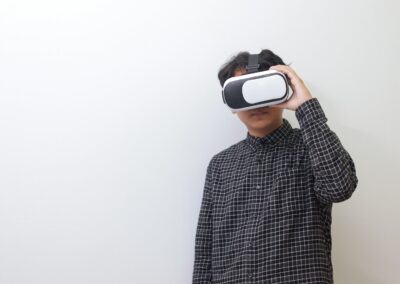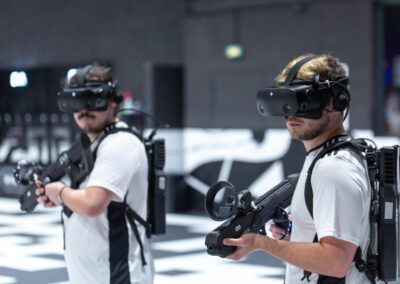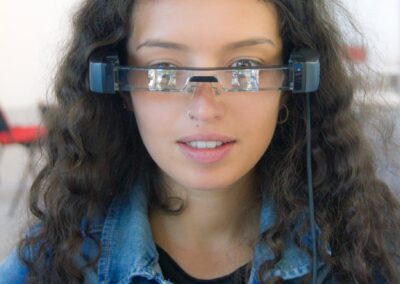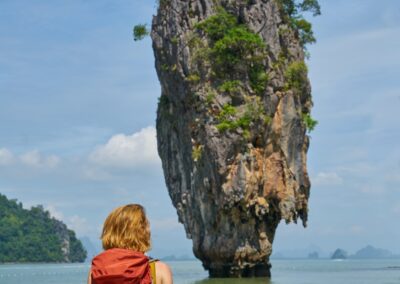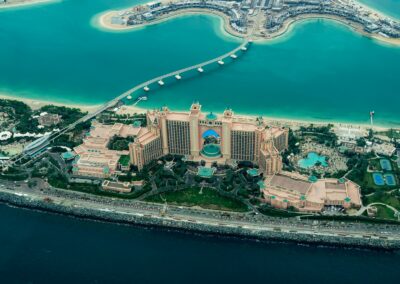Unlocking the Potential of Augmented Reality in Tourism
Introduction to AR Applications in Tourism
In the rapidly evolving tourism industry, AR applications in tourism are emerging as powerful tools to enhance visitor experiences and drive revenue growth. Augmented Reality (AR) overlays digital information onto the real world, creating immersive and interactive experiences for tourists. From virtual guides to interactive maps, AR applications are revolutionizing how tourists explore and engage with destinations.
AR can provide tourists with real-time information about historical sites, cultural landmarks, and local attractions, enriching their travel experiences. For example, visitors can use AR apps to view 3D reconstructions of ancient ruins or to access detailed information about museum exhibits simply by pointing their smartphones at objects. This blend of the digital and physical worlds not only makes learning more engaging but also caters to the modern traveler’s desire for unique and personalized experiences.
For businesses in the tourism sector, AR offers significant opportunities for innovation and growth. By integrating AR into their services, tourism businesses can attract tech-savvy visitors, enhance customer satisfaction, and create new revenue streams. However, to capitalize on these opportunities, it is essential to adopt effective business models and monetization strategies.
Business Models for AR Applications in Tourism
To maximize the potential of AR applications in tourism, businesses need to adopt sustainable and scalable business models. One of the most common models is the freemium approach, where basic AR features are offered for free, while advanced features require a paid subscription or one-time purchase. This model allows businesses to attract a wide user base while generating revenue from premium content.
Another effective business model is partnerships and collaborations. Tourism businesses can partner with local governments, cultural institutions, and other stakeholders to develop AR applications that promote local attractions and events. These partnerships can provide funding and resources for app development, while also enhancing the app’s content and credibility. In return, the app can serve as a marketing tool for partners, driving visitor traffic and engagement.
In-app advertising and sponsored content also present viable business models for AR applications in tourism. Businesses can generate revenue by displaying ads from local businesses, such as restaurants, hotels, and shops, within the AR app. Additionally, offering sponsored content, such as featured tours or highlighted attractions, can provide another revenue stream while promoting local businesses and services.
Monetization Strategies for AR Tourism Apps
Developing a robust monetization strategy is crucial for the success of AR applications in tourism. One effective strategy is to offer value-added services that enhance the tourist experience. For example, AR apps can provide guided tours, interactive games, and personalized itineraries for a fee. These services can cater to tourists seeking unique and immersive experiences, willing to pay for the added value.
Another monetization strategy is leveraging data analytics. AR applications can collect valuable data on user behavior, preferences, and interactions, which can be monetized through targeted advertising and marketing. By analyzing this data, businesses can gain insights into tourist trends and preferences, allowing them to tailor their offerings and marketing campaigns more effectively.
Moreover, businesses can explore subscription-based models, where users pay a regular fee to access premium content and features. Subscriptions can provide a steady revenue stream and foster user loyalty by offering exclusive benefits and continuous updates. For instance, a subscription might include access to new AR content, early access to events, and discounts on partner services.
Case Studies: Successful AR Tourism Applications
Several successful case studies highlight the potential of AR applications in tourism to drive revenue and enhance visitor experiences. One notable example is the “Dubai AR Explorer,” an app that offers tourists an interactive way to explore the city’s landmarks and attractions. The app features AR-guided tours, 3D models of historical sites, and real-time information on local events. By offering both free and premium content, the app attracts a wide audience while generating revenue through in-app purchases and partnerships with local businesses.
In Riyadh, the “Saudi Heritage” AR app provides tourists with an immersive way to experience the city’s rich cultural heritage. The app includes AR overlays of historical landmarks, audio guides, and interactive quizzes. To monetize the app, developers have adopted a freemium model, offering basic content for free while charging for access to premium features and exclusive tours. The app also generates revenue through sponsored content and partnerships with cultural institutions.
The UAE’s “Smart Travel” initiative integrates AR into public transportation and tourism services. The app offers real-time navigation, interactive maps, and AR guides for tourists. By partnering with local transport authorities and tourism boards, the app provides comprehensive and up-to-date information, enhancing the travel experience for users. Monetization strategies include in-app advertising, sponsored content, and premium subscriptions for advanced features.
Best Practices for Developing AR Tourism Applications
To develop successful AR applications in tourism, it is essential to follow best practices that ensure user engagement and revenue growth. First, focus on user experience by designing intuitive and user-friendly interfaces. The app should be easy to navigate and provide seamless access to AR features and information. User feedback and testing are crucial for refining the app and ensuring it meets the needs of tourists.
Second, prioritize content quality and relevance. The app should offer accurate and up-to-date information about attractions, events, and services. Collaborating with local experts and institutions can enhance the app’s content and credibility. Additionally, incorporating multimedia elements such as audio guides, videos, and interactive maps can enrich the user experience and make the app more engaging.
Third, adopt a flexible and scalable business model. Experiment with different monetization strategies to find what works best for your target audience. Continuously monitor and analyze user data to refine your approach and identify new opportunities for revenue generation. Staying adaptable and responsive to market trends will help ensure the long-term success of your AR tourism application.
Conclusion: The Future of AR in Tourism
AR applications in tourism offer immense potential to enhance the travel experience and drive revenue growth. By adopting effective business models and monetization strategies, businesses can capitalize on the opportunities presented by AR technology. Successful implementations in Dubai, Riyadh, and the UAE demonstrate the transformative impact of AR on the tourism industry.
As technology continues to evolve, the integration of AR into tourism will become increasingly sophisticated, offering even more immersive and personalized experiences for travelers. Embracing these advancements and prioritizing user experience will be key to unlocking the full potential of AR in tourism, paving the way for a more innovative and profitable future.
—
#ARApplicationsInTourism #AugmentedRealityTourism #TourismBusinessModels #MonetizationStrategies #ModernTechnology #BusinessSuccess #LeadershipAndManagementSkills #GenerativeArtificialIntelligence #SaudiArabia #UAE #Dubai #Riyadh





